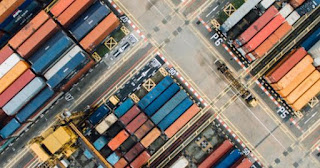RoRo vs Container: Which Shipping Method is Right for You?
When it comes to shipping large items, particularly
vehicles, two primary options dominate the conversation: roro
vs container shipping. These methods offer distinct advantages,
depending on the type of cargo, destination, and the level of protection
required. Understanding the differences between Roll-on/Roll-off (RoRo) and
container shipping can help you make the best decision for your specific
shipping needs. At BEST 4 SHIPPING INC, we offer both options and guide you
through the process to ensure a smooth and efficient delivery.
What is RoRo Shipping?
RoRo, short for Roll-on/Roll-off, is a shipping method
primarily used for transporting vehicles and large machinery. In this method,
vehicles are driven directly onto the ship and secured for the journey. Once
the ship reaches its destination, the vehicles are driven off, hence the term
"Roll-on/Roll-off."
This method is often the go-to choice for shipping cars,
trucks, buses, and even boats or construction machinery. The vehicles are
secured in designated decks within the vessel, where they are protected from
the elements during transit.
Pros of RoRo Shipping:
- Cost-Effective:
RoRo is typically more affordable than container shipping, especially for
standard vehicle transportation. Since vehicles are driven on and off the
vessel, there are fewer loading and unloading costs.
- Faster
Loading and Unloading: RoRo shipping is often quicker because the
vehicles can be driven directly onto the ship without the need for cranes
or other equipment to load them into containers.
- Ideal
for Large Vehicles: For shipping oversized vehicles, such as trucks or
heavy equipment, RoRo is a practical option since it eliminates the need
for disassembling the machinery to fit inside a container.
- Availability:
RoRo services are widely available at many major ports, making it a
convenient option for those shipping standard vehicles globally.
Cons of RoRo Shipping:
- Limited
Protection: While vehicles are secured in a designated area of the
ship, they are not fully enclosed, which means they may be exposed to
external elements such as sea salt, humidity, or minor impacts during
transit.
- Limited
Cargo Types: RoRo is mainly suited for wheeled or self-propelled cargo
like cars and trucks. For shipping household goods, spare parts, or other
items along with your vehicle, you’ll need to explore container shipping.
- Potential
Delays: RoRo vessels generally follow specific schedules, and your
vehicle might need to wait for the next available ship if there's high
demand.
What is Container Shipping?
Container shipping involves placing your vehicle or goods
inside a fully enclosed container before it is loaded onto the ship. Containers
come in standard sizes, most commonly 20-foot and 40-foot, and offer
significant protection from the elements. For vehicle shipping, the vehicle is
secured within the auto export container, often with additional goods
packed around it, if desired.
This method is highly versatile and can be used for shipping
vehicles, personal items, and a wide range of other cargo types.
Pros of Container Shipping:
- Enhanced
Protection: The primary advantage of container shipping is that it
provides superior protection for your vehicle and goods. The enclosed
container shields against weather conditions, theft, and damage during
transit.
- Versatility:
In addition to vehicles, container shipping allows you to ship personal
belongings or commercial goods alongside the vehicle. This is ideal if
you’re relocating or need to send additional cargo with your car.
- Flexible
Sizes: With various container sizes available, you can choose the
right fit for your cargo. A 20-foot container may be ideal for one
vehicle, while a 40-foot container can accommodate multiple vehicles or
additional goods.
- More
Shipping Routes: Container shipping is available on a wide range of
shipping routes, making it a versatile option for international shipments.
Cons of Container Shipping:
- Higher
Costs: Now how many cars can you fit in a 40ft container is
generally more expensive than RoRo due to the cost of the container itself
and the need for additional labor to load and unload the container.
- Longer
Processing Times: Loading and unloading a container can take more time
compared to driving a vehicle onto a RoRo vessel. This may result in
longer wait times during the shipping process.
- Limited
to Standard-Sized Cargo: For oversized vehicles or machinery that
doesn’t fit inside a standard container, this option may not be practical.
RoRo vs Container: Which Should You Choose?
The decision between RoRo vs container shipping
depends on your specific needs. Here are some considerations to help you
decide:
- Cost:
If budget is your primary concern and you’re shipping a standard vehicle,
RoRo is often the most economical choice. However, if you’re shipping
high-value goods or want to ship personal items along with your vehicle,
the extra cost of container shipping may be worth it.
- Protection:
For valuable or fragile cargo, container shipping offers better protection
from weather and potential damage. RoRo exposes vehicles to more risks,
though it’s still a secure method for standard vehicle transport.
- Cargo
Type: If you’re shipping a single car or truck, RoRo is ideal.
However, if you’re shipping a vehicle along with personal goods or
commercial items, container shipping is a better option.
- Size
and Weight: For oversized vehicles or heavy machinery, RoRo may be the
only option, as these items may not fit into standard containers.
Conclusion
Ultimately, both RoRo and container shipping offer reliable
solutions for transporting vehicles and goods internationally. The right choice
depends on your specific shipment, budget, and protection requirements. At BEST
4 SHIPPING INC, we provide expert guidance to help you determine the best
shipping method for your cargo. Whether you choose RoRo or container shipping,
we’ll ensure your items arrive safely and on time. Contact us today to learn
more about your options!


.jpg)

Comments
Post a Comment